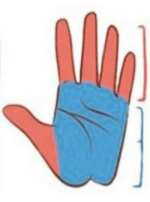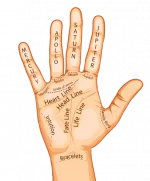The art of palmistry, also known as chiromancy, has fascinated and intrigued people for centuries. The idea that the lines, shapes, and patterns on our palms can offer insights into our personalities, destinies, and even potential life events is both captivating and mystifying. Whether you’re a skeptic or a believer, learning how to read palms can be a fascinating journey into self-discovery and a fun way to connect with others. In this beginner’s guide, we’ll explore the basics of palmistry and provide you with some tips to get started on this intriguing path.
Understanding the Basics
Palmistry is the art of interpreting the lines, mounts, and shapes on the palms of the hands. Each hand is said to represent a different aspect of your life – the left hand supposedly revealing your potential, while the right hand offers insights into your current circumstances. There are three major lines that palmists commonly analyze:
- Heart Line: This line curves around the top of the palm, just beneath the fingers. It is associated with matters of the heart, emotions, and relationships. The depth, length, and any breaks in this line can reveal information about your emotional tendencies and relationships.
- Head Line: Located below the heart line, the head line represents your intellectual inclinations, decision-making abilities, and thought processes. It can offer insights into your communication style, problem-solving skills, and even your potential career choices.
- Life Line: Contrary to popular belief, the life line does not predict the length of your life. Instead, it reflects the quality and direction of your life journey. It’s often used to gauge major life events, health, and vitality.
Apart from these major lines, there are also minor lines and mounts (raised areas of the palm) that add nuance to a palm reading.
Getting Started with Palm Reading
- Observe the Basics: Begin by observing the basic characteristics of the hands you’re reading. Consider the shape, size, and proportion of the fingers, as well as the overall texture and flexibility of the hands. These aspects can provide initial clues about personality traits.
- Line Interpretation: Pay attention to the major lines and their characteristics. Long, deep lines are believed to indicate strength and clarity, while shallow or broken lines might suggest challenges or changes. Crossings, forks, and islands on the lines can be indicators of specific events or shifts in your life.
- Mount Analysis: Examine the mounts, which are the fleshy areas at the base of each finger and the center of the palm. Different mounts correspond to different qualities, such as creativity, intuition, and communication.
- Hand Dominance: Determine which hand you want to focus on: left or right. As mentioned earlier, the left hand is associated with potential, while the right hand reflects current circumstances. Some palmists choose to read both hands for a comprehensive view.
- Context Matters: Remember that palmistry is not an exact science. Interpretations can vary depending on cultural beliefs, personal biases, and individual experiences. Consider the reading as a tool for self-reflection rather than a definite prediction.
Ethical Considerations
When attempting to read palms, it’s essential to approach the practice with respect and sensitivity. Keep in mind that palmistry should never be used to manipulate or deceive others, and it’s important to obtain consent before attempting a reading for someone else.
Conclusion
Learning how to read palms can be an intriguing journey into self-discovery and a unique way to connect with others. While the art of palmistry may not have scientific validation, it offers an opportunity for reflection and exploration. As you delve into this captivating practice, remember that it’s the process of self-awareness and understanding that truly matters. So, gather some willing friends, explore the lines, shapes, and mounts on your palms, and enjoy the enigmatic world of chiromancy.

